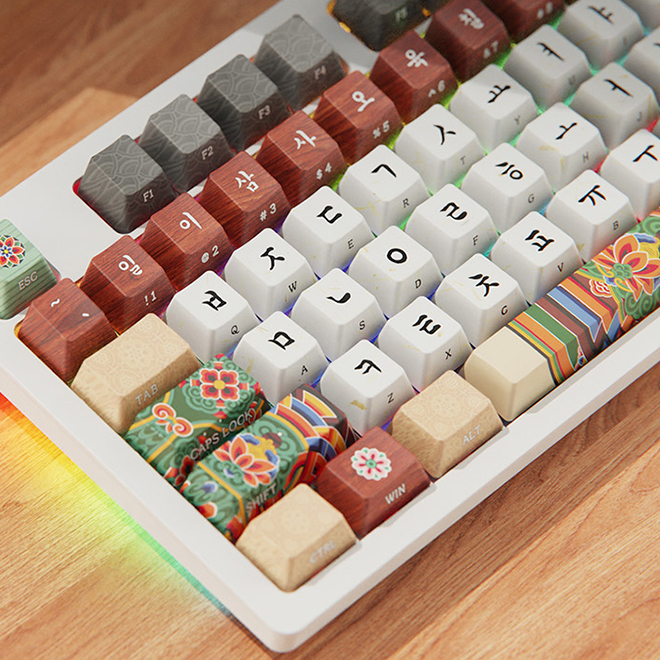Slimmest Foldable Phone Showdown: China’s OPPO Find N5 vs Samsung Galaxy Z Fold 7 in 2025
Foldable phones have stormed the world of technology with a revolutionary blend of portability and futuristic aesthetics. As the fight to become the thinnest, lightest, and strongest foldable escalates, Chinese companies and market leader Samsung are competing with each other to set the bar higher. In 2025, OPPO’s Find N5 was the world’s thinnest book-style foldable, and Samsung is ready to retaliate with Galaxy Z Fold 7. How do these titans compare to one another, and what does it mean for the future of foldables? Let’s get into this fight and see what the future holds for the foldable market.
The Emergence of China in the Foldable Smartphone Market
Years ago, Samsung led the foldable phone market, dictating the speed of innovation and dependability with its Galaxy Z Fold and Z Flip line. But the Chinese operators shortened the gap very quickly, and in 2025, they’ve leaped by a massive margin. OPPO, Huawei, and Chinese players aren’t merely bridging the gap—thus creating a new benchmark. They’re redefining the book in terms that are causing Samsung to adopt a new approach.
OPPO Find N5: The Thinnest Foldable in the World?
OPPO stole the show at MWC 2025 with the international launch of the Find N5, unveiling the world’s thinnest book-style foldable smartphone. Here’s why the phone is ground-breaking:
- Unprecedented Thinness: When folded, the Find N5 is a mere 8.93mm thick—no thicker than Samsung’s non-foldable Galaxy S25 Ultra (8.2mm). That’s no mean feat in a phone that unfolds to yield a tablet-sized screen.
- Lightweight Build: At 229g, the Find N5 is only 7g heavier than Samsung’s Galaxy Z Fold Special Edition and is one of the lightest in its category.
- Improved Hinge Technology: OPPO first launched its “Titanium Flexium Hinge,” which is 26% thinner than the previous one but still robust. The hinge design also helps achieve an almost invisible crease, resolving one of the largest pain points of foldable screens.
- Premium Specs: Qualcomm Snapdragon 8 Elite processor fuels the Find N5, backed by a colossal 5,600mAh battery—its USP among the foldables. It has 80W wired and 50W wireless charging with lightning-quick top-ups.
- New Battery Technology: OPPO made it possible to maintain this skinny form factor while loading up with a high capacity battery through a silicon-carbon anode battery, which packs more energy in less real estate. Naturally, there are issues of durability for the long haul since silicon-based batteries can swell due to repeated charging cycles.
As impressive as its specs are, however, the Find N5 is not flawless. While it’s IPX8 and IPX9 water resistant, it does not have a dust resistance rating, so it may not be quite as durable in harsh environments as some of its rivals. Furthermore, early hands-on reactions at MWC suggested that the crease, though better, is still faintly perceptible under some light conditions, which somewhat diminishes OPPO’s “crease-free” boasts.
Huawei Mate XT: Breaking Foldable Barriers
Huawei also warrants a mention here, as it launched the Mate XT, the first tri-fold phone in the world. The phone folds twice, both inward (in-folding) and outward (out-folding), transforming from a phone in the pocket to a massive tablet-sized screen. Some of the main highlights are:
- Gigantic Screen: When unfolded completely, the Mate XT has a screen size similar to small tablets, hence being termed as “the smartphone with the biggest screen.”
- Camera Excellence: Mate XT comes with a camera setup boasting 5.5x optical zoom and 50x digital zoom, better than even Samsung Galaxy S25 Ultra’s (5x optical) zoom level.
- Battery and Charging: Similar to Find N5, it boasts a 5,600mAh battery supporting 66W wired charging and 50W wireless charging.
But the Mate XT’s weak point is durability. Initial testing has revealed that the folding-outward mechanism exposes the screen to scratches and dents, with some test subjects sporting visible fingernail marks on the screen. At a cost of almost $3,000, this raises serious doubts about its use in daily life.
China’s Risk-Taking Strategy
Chinese manufacturers are unique in 2025 in that they are risk-takers. From tri-fold form factors to breathtakingly thin profiles and innovative battery tech, names such as OPPO, Huawei, and even mid-range players such as Tecno are pushing the boundaries. Tecno, in MWC, introduced a concept tri-fold foldable, and other Chinese competitors introduced mini flip-like foldables emphasizing portability and design over functionality. Although some of these still have to turn into actual products, they promise a future when foldables can be even more specialized and diverse.
Samsung’s Reply: Galaxy Z Fold 7 and Beyond
Samsung, who invented fold phones, has found itself under rising pressure to up its game following Chinese rivals usurping the stage. Samsung Galaxy Z Fold 6 Special Edition (launched late in 2024) was a welcome move towards the thinner devices but was thicker with a smaller battery compared to its Chinese counterparts. What then lies in store for the Galaxy Z Fold 7, set for launch in July 2025?
Galaxy Z Fold 7: Thinner, Lighter, but Conservative?
Leaks and rumors suggest the Galaxy Z Fold 7 will be Samsung’s thinnest foldable to date, but perhaps not quite as razor-thin as Chinese competitors. Here’s what we know so far:
- Sleeker Design: Leaked renders reveal that the Fold 7 will be 4.5–5mm in thickness when flat and 9.5mm when folded. Although this is better than the Fold 6 (12.1mm folded), it is worse than the Find N5’s 8.93mm fold thickness.
- Big Screens: The Fold 7 could have an 8.2-inch cover screen and a 6.5-inch main screen, but slimmer bezels for improved viewing. That would bring it much closer to the Find N5’s 7.8-inch internal screen size in screen real estate.
- Enhanced Crease: Samsung has allegedly tuned its hinge mechanism to minimize crease visibility further, continuing the progress in the Fold 6 Special Edition. It won’t be “crease-free” like OPPO advertises, but it will be less prominent than previously.
- Battery Stagnation: Unfortunately, the Fold 7 is said to carry the same 4,400mAh battery as before, behind the 5,600mAh capacities of the Find N5 and Mate XT. Samsung’s conservative approach to battery tech—almost certainly more focused on safety than capacity—means it will not be implementing silicon-carbon batteries anytime in the near future.
- Camera Upgrades: The Fold 7 will hopefully have a 200MP primary camera, a major jump from the 50MP sensor on the Fold 6. However, it’s probable that the ultra-wide (12MP) and telephoto (10MP) cameras won’t get a change, and it’s unknown whether the image sensor gets upgraded beyond raw megapixel numbers.
- S Pen Trade-Off: In order to make the phone thinner, Samsung can eliminate digitizer layer which allows S Pen, a feature that has been characteristic of the Fold series. This may turn off productivity-oriented consumers who use the stylus to take notes and draw.
Samsung’s Safety-First Strategy
Samsung’s 2025 foldable vision seems to be centered on durability and reliability rather than showy innovation. For example, whereas Chinese companies are embracing silicon-carbon batteries, Samsung is working on solid-state battery technology, which can provide greater energy density, quicker charging, and better safety. Yet the technology is years from large-scale production, so Samsung’s foldables will continue to trail in battery life and charging speed in the near term.
Aside from that, Samsung foldables possess decent build quality with IP48 ratings for dust and water resistance and solid hinges that are much better than the first Galaxy Fold. Look at phones like the Huawei Mate XT, which have durability issues with damage high on the list, especially considering its price point.
Galaxy Z Fold Tri-Fold: A Future Contender?
Looking beyond the Fold 7, Samsung is reportedly working on a tri-fold foldable, codenamed “Galaxy Z Fold Tri-Fold.” Unlike Huawei’s Mate XT, which uses a mix of in-folding and out-folding, Samsung’s design is expected to use a double in-folding mechanism, folding inward like a closet door to protect the screen. Rumored specs include:
- Massive Display: A fully unfolded screen measuring 9.96 inches wide and 6.54 inches tall, rivaling small tablets.
- Cover Display: Mini external display for minimal operations when the phone is completely folded.
- High Price Point: Around $3,500 to $4,000, which makes it a luxury item.
While this device could compete with Huawei’s Mate XT, its high cost and potential thickness (due to the double in-folding design) may limit its appeal. Additionally, like the Fold 7, it may lack S Pen support to keep the design slim.
China vs. Samsung: Who Emerges Victorious in 2025?
The Samsung vs. Chinese foldables war in 2025 is philosophical rather than purely a question of sheer specs. Oppo and Huawei, among Chinese rivals, are driving the innovation forward with emphasis on thinness, battery life, and camera chops even if at the expense of some ruggedness. Samsung plays it safe, emphasizing reliability, software finesse, and ecosystem integration (such as Galaxy AI and DeX).
Strengths of Chinese Foldables
- Innovation: Devices like the OPPO Find N5 and Huawei Mate XT push the boundaries of design, offering thinner profiles, larger batteries, and unique form factors like tri-folds.
- Battery Life: With capacities up to 5,600mAh, Chinese foldables outlast Samsung’s offerings, which are stuck at 4,400mAh.
- Camera Performance: Huawei’s Mate XT, in particular, excels in zoom capabilities, surpassing even Samsung’s non-foldable flagships.
- Affordability: Although there are premium models such as the Mate XT, which is costly, companies such as Tecno are introducing relatively affordable foldables into the market, opening up the market.
Weaknesses of Chinese Foldables
- Durability Issues: Phones such as the Mate XT obviously have durability problems, including scratches on the screen and fingernail impressions, that could discourage mass adoption.
- Software and Ecosystem: Chinese foldables lack the software finesse and ecosystem support (e.g., Google Play Store availability internationally beyond China) provided by Samsung, which makes them less appealing to Western markets.
- Availability: Chinese foldables like the Find N5 and Mate XT aren’t easily available around the world beyond Asia, preventing them from finding a broad global appeal.
Strengths of Samsung Foldables
- Reliability: Samsung foldables are robust, with robust hinges, IP48 ratings, and previous use to withstand daily wear and tear.
- Software Polish: Galaxy AI, DeX, and bizarre cohesion with Samsung’s ecosystem (e.g., Galaxy Watch, Buds) make Samsung’s foldables a better bet for the masses.
- Global Availability: Samsung foldables enjoy global availability, great after-sales support and carrier relationships, in contrast to many Chinese players.
- Long-Term Support: Samsung provides seven years of software and security updates, keeping its devices up to date.
Weaknesses of Samsung Foldables
- Conservative Innovation: Samsung’s incremental innovations like the incremental upgrade of the Fold 7 might make its foldables appear monotonous relative to China’s aggressive strategies.
- Battery and Charging: Samsung’s hesitation in using larger batteries or quicker charging speeds disadvantages the company, given that the competition now supports 80W wire and 50W wireless charging.
- Price vs. Value: Priced at a base of $1,899 for the Fold 6 (and hopefully the Fold 7 at the same cost), Samsung foldables are overpriced, given that competition provides similar or superior specs for less.
Final Thoughts
The conflict between China’s thinnest foldables and Samsung Galaxy Z Fold 7 is the greater smartphone world writ small, in which risk and dependability historically battle it out. As a consumer, it’s an exciting time to be looking to purchase a foldable, but it’s also a time to weigh your concerns equally. Would you sacrifice longevity for thinnest design and largest battery, or would you want a more refined, safer experience in exchange for innovation?
What do you think about this foldable fight? Are you hyped for Samsung’s Galaxy Z Fold 7, or do you believe Chinese competitors like OPPO and Huawei are taking over the game? Share with us in the comments below!

